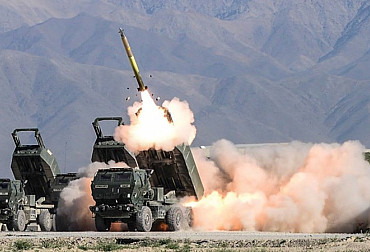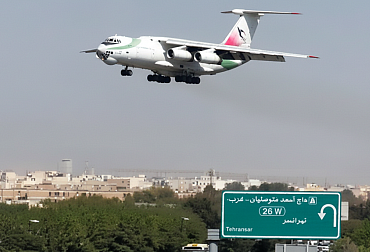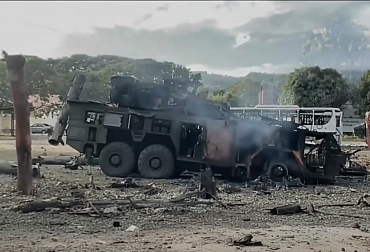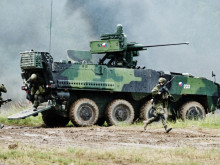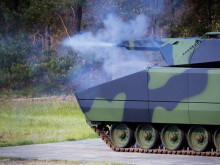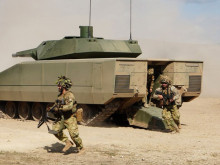Loitering Munition in ACR
In the autumn of last year, the world was shocked by the shots that sent chills down everyone’s back. Footage from a drone showed another drone flying towards a target and then exploding. During the war for the Nagorno-Karabakh region, so-called loitering munition was deployed, which is better known as a suicide or kamikaze drone. What are the prospects for the deployment of these weapons systems in the ACR and is there an effective defence against them?
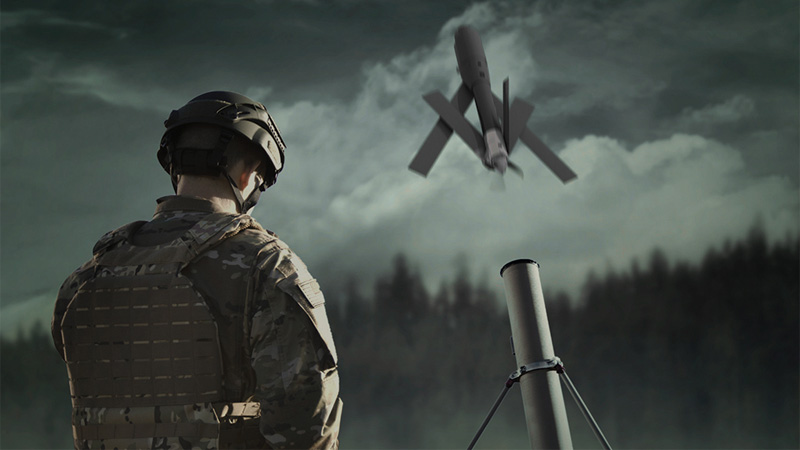 Picture: During the war for the Nagorno-Karabakh region, so-called loitering munition was deployed, which is better known as a suicide or kamikaze drone. (illustration photo) | AeroVironment / CC BY-NC-ND
Picture: During the war for the Nagorno-Karabakh region, so-called loitering munition was deployed, which is better known as a suicide or kamikaze drone. (illustration photo) | AeroVironment / CC BY-NC-ND
As has already been mentioned, the loitering munition became famous especially in the conflict over Nagorno-Karabakh, where it was deployed extensively. However, it is not a revolutionary weapon system. The popular term suicide or kamikaze drone is fitting – a drone, controlled by a human operator, can be guided to a specific target. The second option is to loiter in the area of interest (hence the name) and search for a suitable target. The main advantage of such a weapon system is the price/performance ratio. In contrast to the deployment of a manned aircraft, the cost of such a device is minimal and the performance is comparable to the performance of a manned aircraft or an unmanned aerial vehicle such as the MQ-9 Reaper. In contrast to that, however, it must be expected that the loitering munition will be destroyed during combat deployment.
The loitering munition as a weapon system became famous mainly because of Israeli companies, whose products were used in the war for Nagorno-Karabakh. Israeli arms factories are developing a wide range of loitering munition from small (SPIKE Firefly), through medium (Harpy and Harop) to large (Green Dragon). The launcher can be mounted on trucks, light off-road vehicles or can be carried by a specific soldier.
American companies came up with an interesting solution. They managed to integrate the loitering munition together with the reconnaissance drone on the Stryker 8x8 platform. Commanders of units equipped with such vehicles are thus allowed to survey the area of interest and “clean it up” before the unit arrives in the area. Both the loitering munition and the reconnaissance drone are fired directly from the Stryker vehicle, and the reconnaissance drone is able to return to the vehicle.
Even another arms power, Russia, is not lagging behind in the development of this type of weapon system. One of the Kalashnikov Group companies is developing and testing a system capable of carrying 3 kg of explosives. According to the latest information, this system has been successfully tested in Syria. The manufacturer states that the system makes virtually no sounds and is able to last up to 30 minutes in the air.
Although, based on the experience from the Nagorno-Karabakh conflict, it might seem that the loitering munition is a revolutionary and essentially invincible weapon system, this is not the case. The main problem of the Armenian armed forces in the conflict was the absence of an integrated multi-layered air defence. Armenia also initially lacked the means of electronic warfare, which allowed Turkish drones to freely guide loitering munition to Armenian targets. The ideal defence against loitering munition should therefore consist of the integration of air defence means (not only ground-to-air missiles, but also powerful lasers) in multiple layers and the extensive deployment of electronic warfare devices.
In the Czech case, it is possible to count on the acquisition of foreign technology, which could, however, be supplemented by a thermobaric warhead developed in the Czech Republic. At the end of the year, Jiří Protiva, the then director of the Military Technical Institute, confirmed the intention to develop a warhead for loitering munition. The question remains what specific types of loitering munition could be introduced into the ACR. Below are possible variants.
Within the ACR artillery, larger types of loitering munition could be integrated, such as the above-mentioned types of Green Dragon or Harop. Loitering munition can suitably complement current and future artillery. The issue is the integration with rocket launchers (if they are introduced). The loitering munition could serve as a “finishing cleansing” device after the rocket attack. At the same time, the loitering munition, due to its waiting function, could be used as a reconnaissance tool to evaluate the effects of artillery fire (barrel and rocket launchers).
As for the mechanized brigade and the rapid deployment brigade, it is possible to consider the introduction of smaller types of loitering munition and their integration into Pandur, Iveco and future tracked infantry fighting vehicles. In the case of rapid deployment brigade and Pandur vehicles, this could be integrated in a similar form as the Stryker vehicle mentioned above.
The third example is small, portable loitering munition, which can find use in special and airborne units. During their operations, they may find themselves in a situation where they will need more firepower and it will not be possible to call in air support. It is in this case that loitering munition would be an ideal solution.
Loitering munition has clearly shown that it can be a useful weapon system on battlefields of today. Whether it is a category of larger suicide drones that can be used against fortified or armoured targets or a light category such as the Israeli SPIKE Firefly usable for special forces, all these weapon systems could find use in the ACR. In the ACR, the loitering munition could also serve to ensure that large contingents and heavy weapons would no longer need to be deployed in foreign missions and that specialized small units with high firepower could be deployed. However, the army should not only address the possible use of loitering munition, but also the defence against it, as the proliferation of this type of weapons could be expected among non-state actors and terrorist groups, which will be a serious threat to the ACR and Allied forces.











